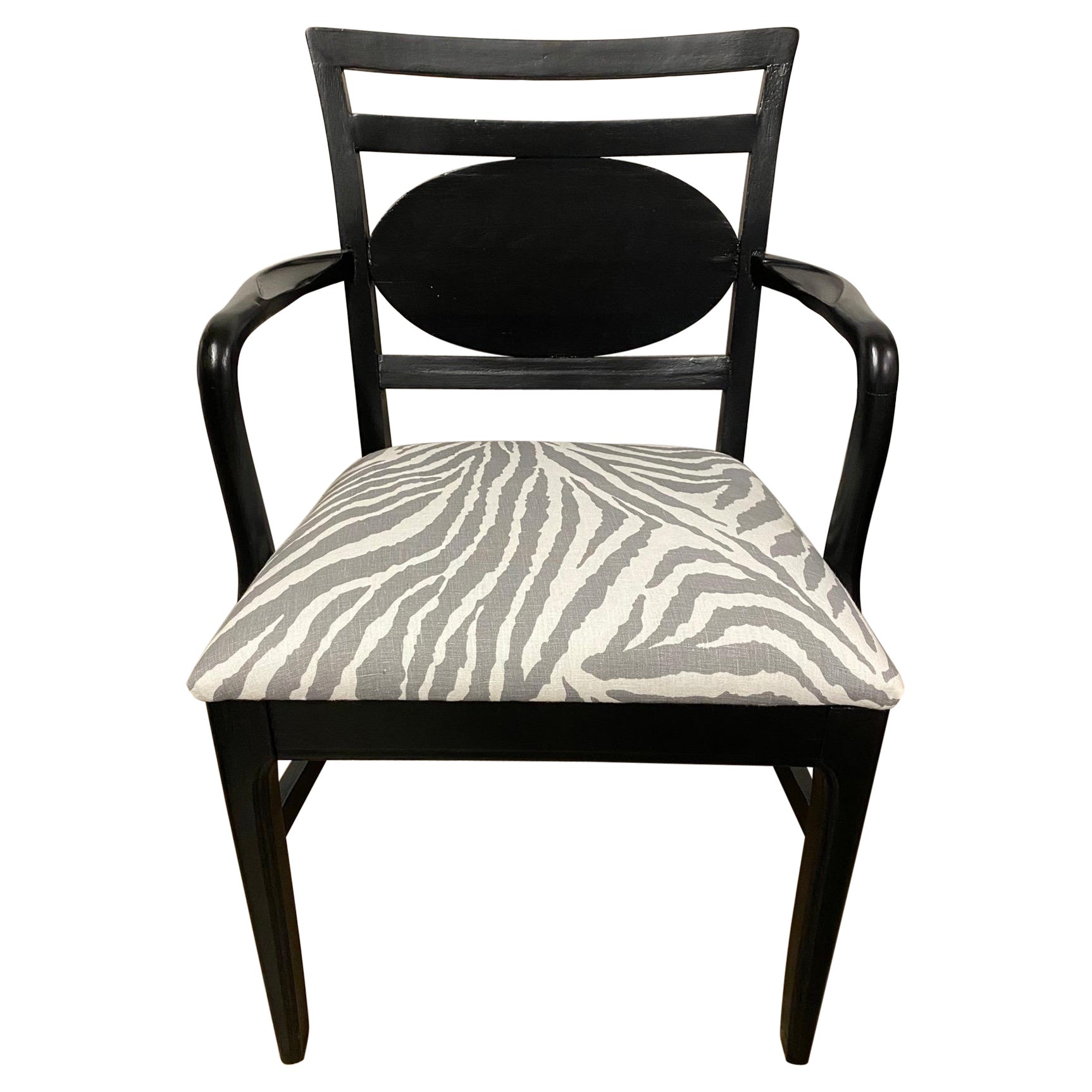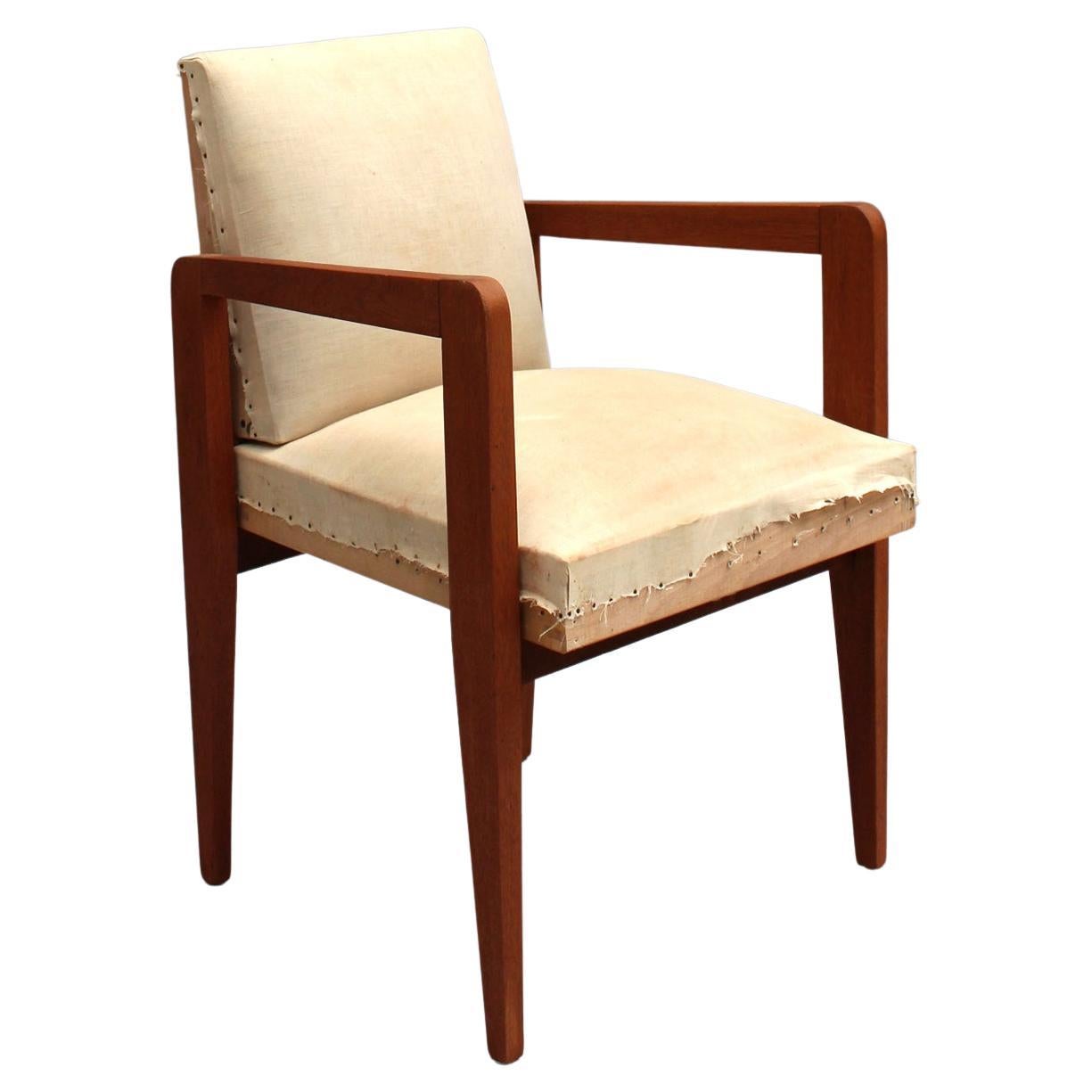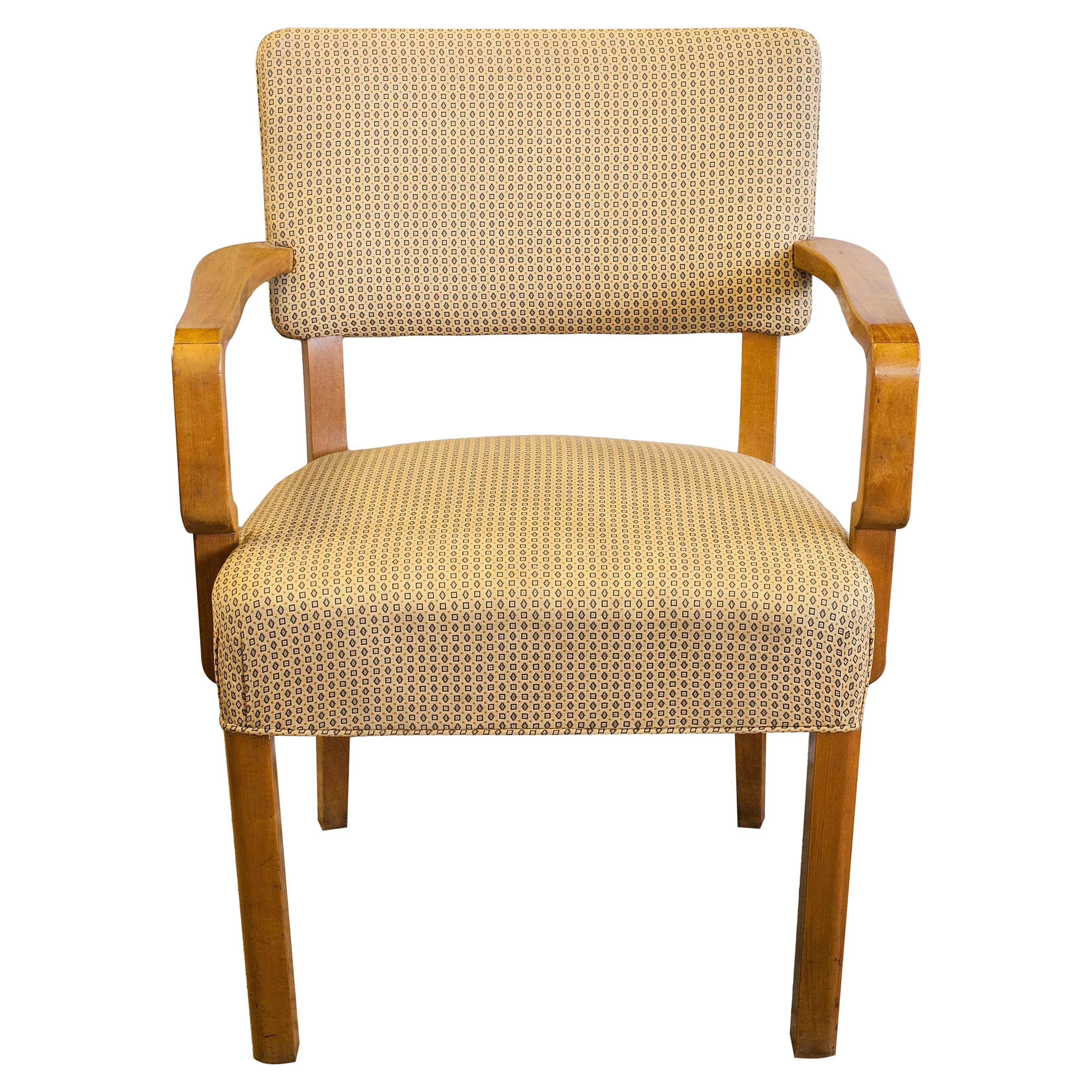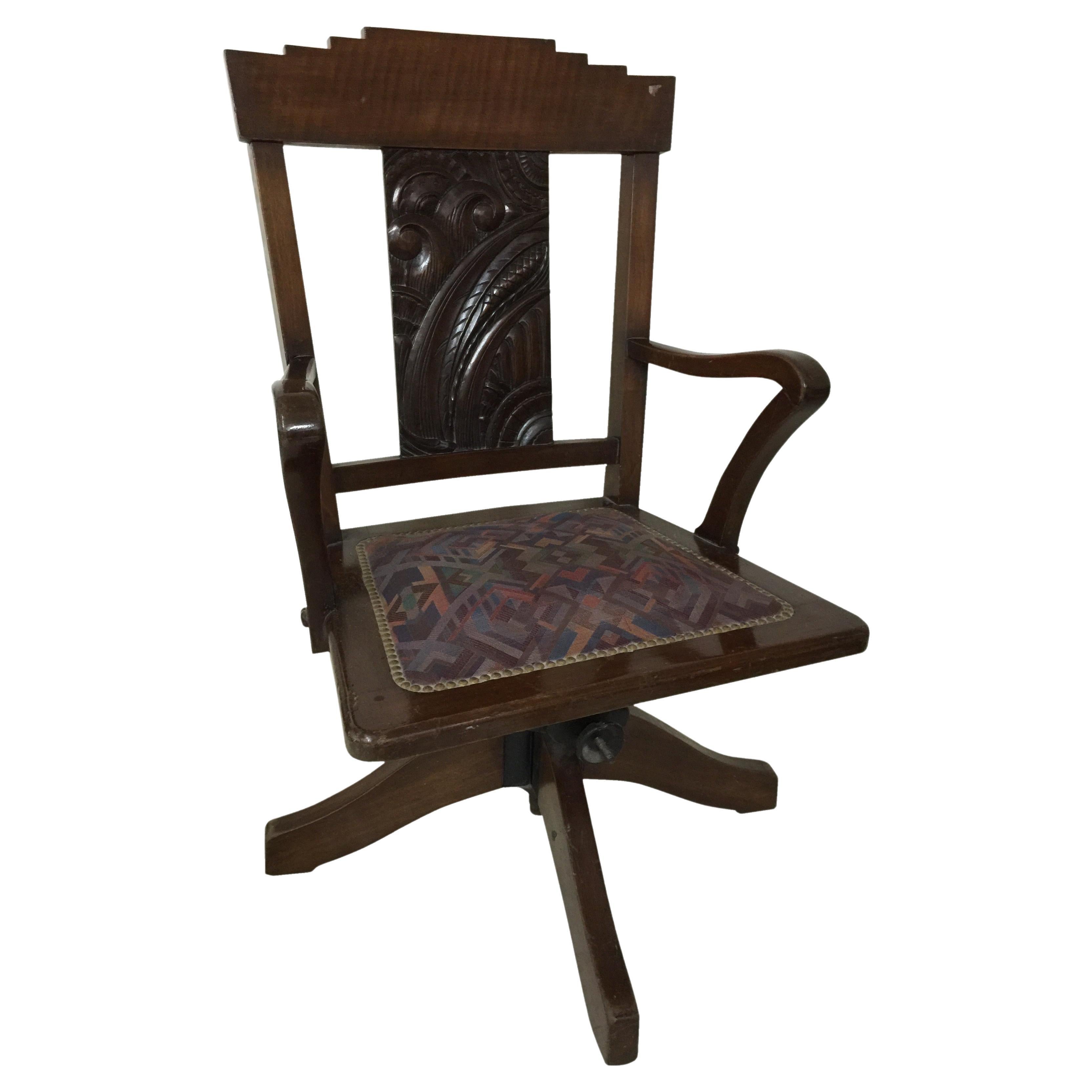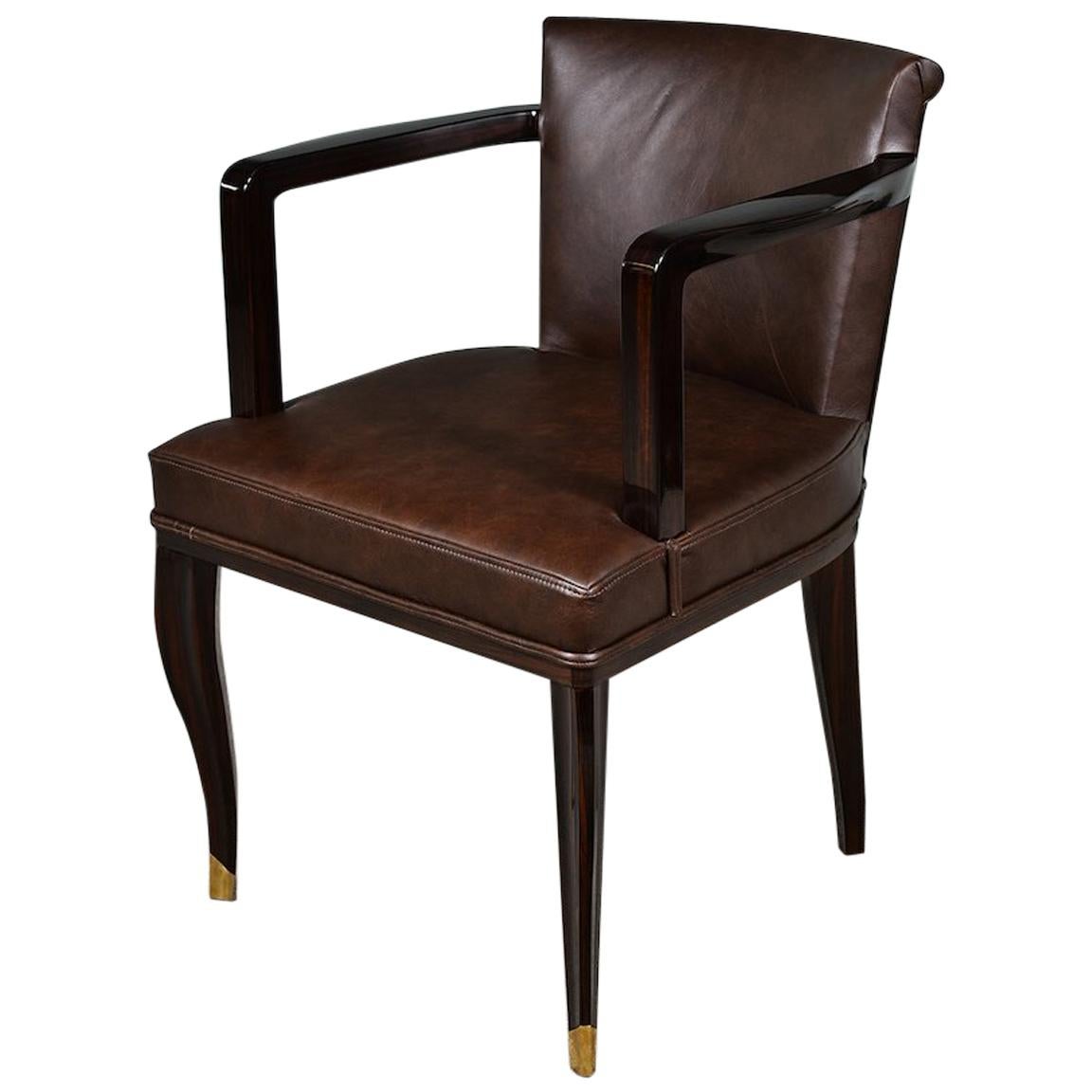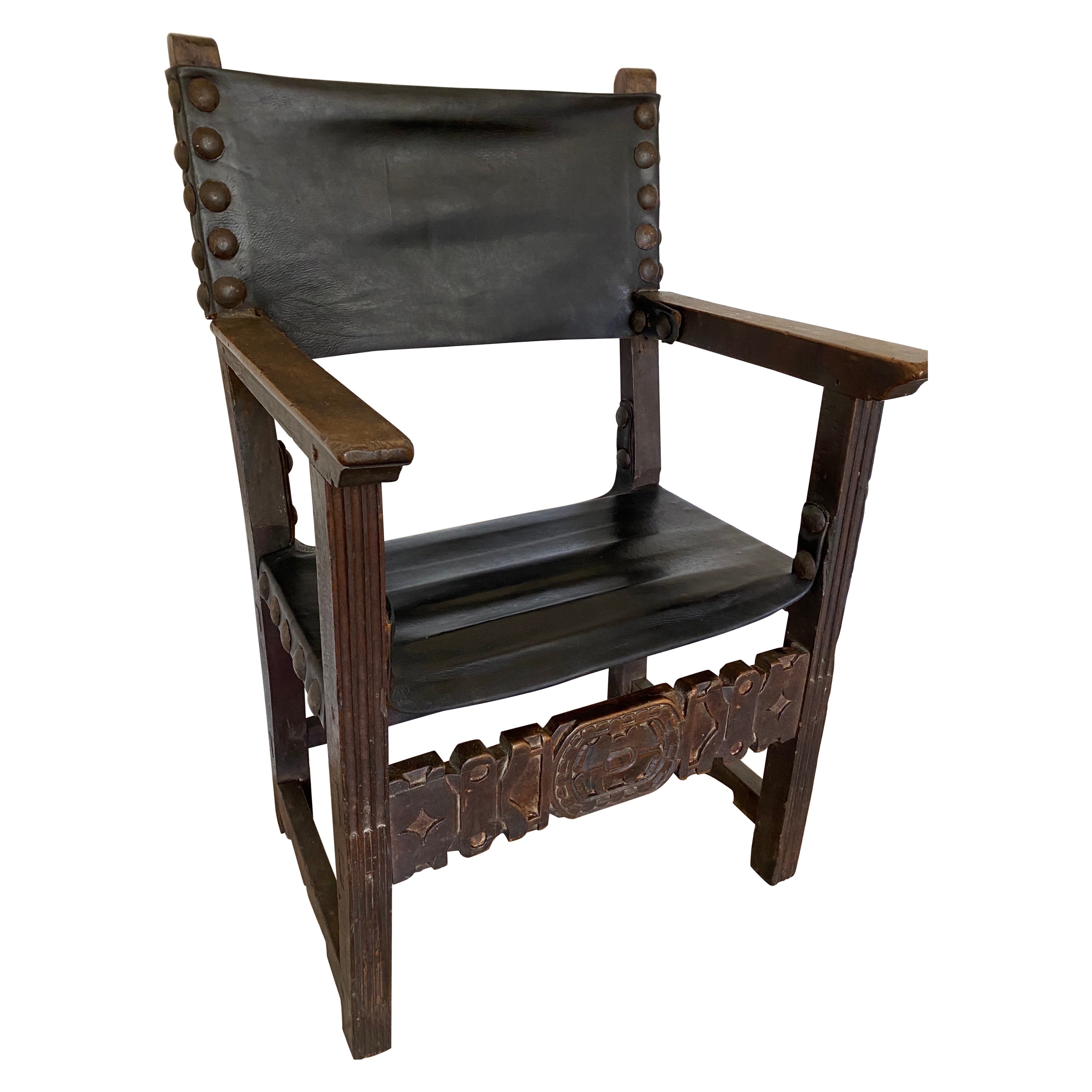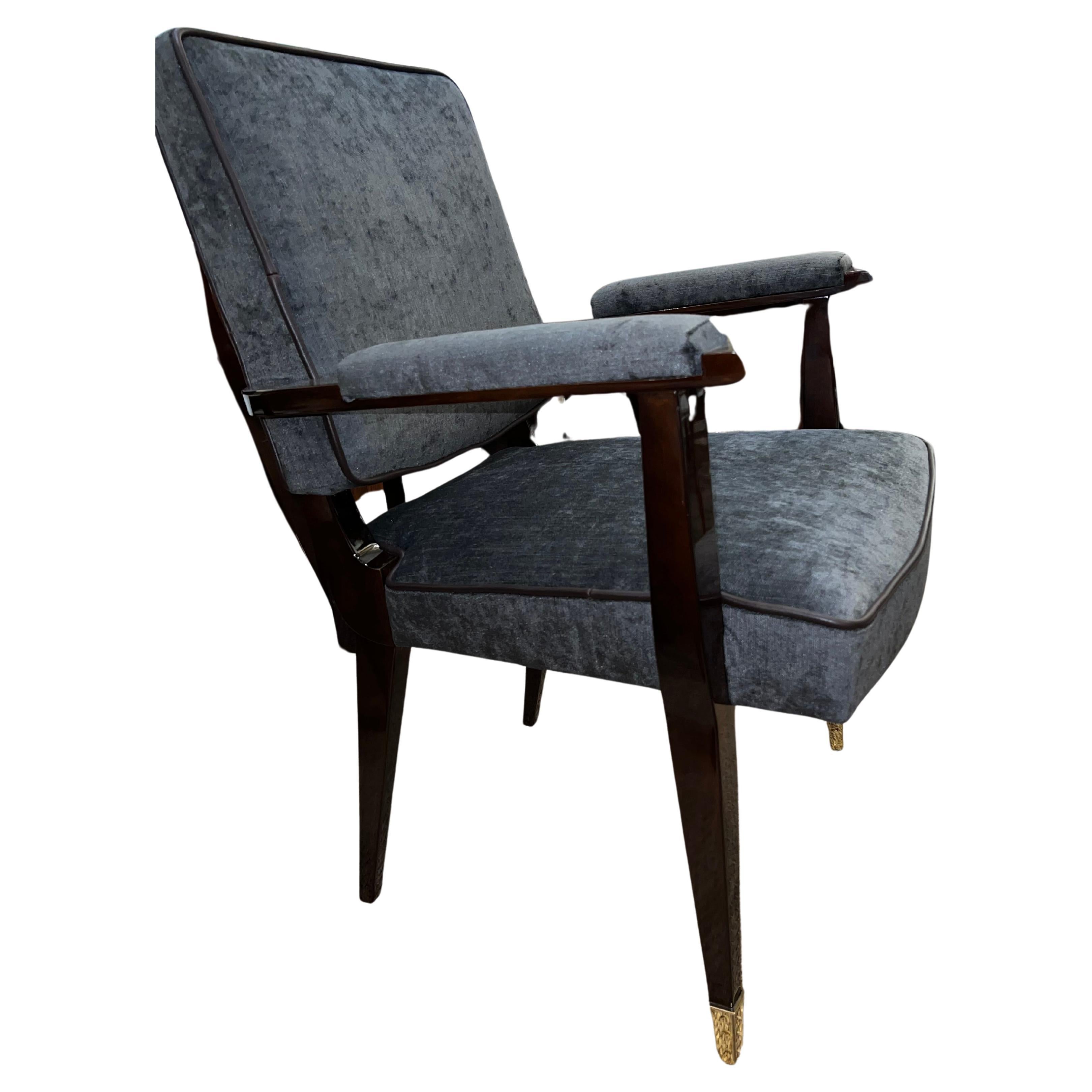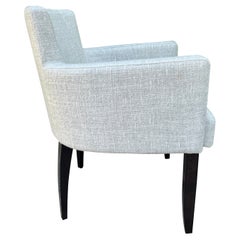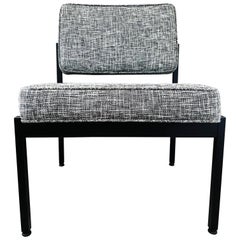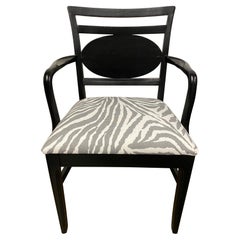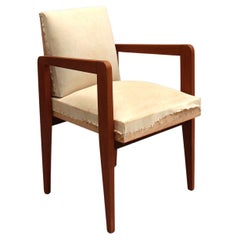
Luxe Art Deco Style Occasional Arm Chair in Moss Mohair
View Similar Items
Want more images or videos?
Request additional images or videos from the seller
1 of 6
Luxe Art Deco Style Occasional Arm Chair in Moss Mohair
About the Item
- Dimensions:Height: 31.5 in (80.01 cm)Width: 25.5 in (64.77 cm)Depth: 26 in (66.04 cm)Seat Height: 17.5 in (44.45 cm)
- Style:Art Deco (In the Style Of)
- Place of Origin:
- Period:
- Date of Manufacture:20th Century
- Condition:
- Seller Location:Fort Lauderdale, FL
- Reference Number:1stDibs: 1408119110686
About the Seller
5.0
Vetted Seller
These experienced sellers undergo a comprehensive evaluation by our team of in-house experts.
Established in 2011
1stDibs seller since 2011
403 sales on 1stDibs
Typical response time: 2 hours
More From This SellerView All
- Modernist Occasional Chair in Grey Woven Upholstery by Pierre FreyBy La Maison Pierre FreyLocated in Fort Lauderdale, FLThe Emile chair by Pierre Frey. The linear frame evokes designs from both the Art Deco and Mid-Century Modern eras. The chair features a shorter back design with streamlined arms, an...Category
2010s French Mid-Century Modern Armchairs
MaterialsTextile, Beech
- Mid-Century Modern Chair in Woven Grey by Pierre FreyBy La Maison Pierre FreyLocated in Fort Lauderdale, FLArmchair designed by Pierre Frey, borrows from both the Art Deco and Mid-Century Modern eras. The chair features a shorter back design with streamlined arms, and slightly splayed sab...Category
2010s French Mid-Century Modern Armchairs
MaterialsTextile, Beech
- Knoll Style Office Chair in Black and Ivory Tweed, c. 1970'sBy Florence Knoll, Rogers & GoffigonLocated in Fort Lauderdale, FLMid-Century Modern chair with minimalist industrial design. Fine example of utilitarian furniture, great as an office chair or as an easy chair. Satin black enameled metal frame is c...Category
Vintage 1970s American Mid-Century Modern Side Chairs
MaterialsSteel
- Vintage Knoll Style Industrial Chair in Black and Ivory Tweed, c. 1970'sBy Florence KnollLocated in Fort Lauderdale, FLMid-Century Modern chair with minimalist industrial design. Fine example of utilitarian furniture, great as an office chair or as an easy chair. Satin black enameled metal frame is c...Category
Vintage 1970s American Industrial Side Chairs
MaterialsSteel
- Chrome Desk Chair by Brueton in Woven Tropical Leaves, c. 1970'sBy BruetonLocated in Fort Lauderdale, FLMid-Century Modern desk chair or side chair with cantilevered steel frame in chrome. Chair has streamlined profile with curved armrests and floating seat design. Newly upholstered in handwoven fabric...Category
Vintage 1970s American Mid-Century Modern Office Chairs and Desk Chairs
MaterialsStainless Steel, Chrome
- Chrome and Tweed Desk Chair Upholstered in Rogers & Goffigon, c. 1970'sLocated in Fort Lauderdale, FLMid-century modern desk chair or side chair with sleek cantilevered frame in polished chromed steel. Upholstered in woven tweed Rogers & Goffigon fabric in hues of steel blue and gre...Category
Vintage 1970s American Mid-Century Modern Chairs
MaterialsChrome
You May Also Like
- Ebonized Art Deco Style Arm ChairLocated in Sheffield, MAStylish Art Deco style wood frame office or desk arm chair in black. Chair has a decorative oval medallion on the back and an upholstered seat covered in contemporary grey and white ...Category
Mid-20th Century American Mid-Century Modern Office Chairs and Desk Chairs
MaterialsWood
- Fine French Art Deco Mahogany Arm ChairLocated in Long Island City, NYA fine French 1930's mahogany armchair in the manner of Adnet.Category
Vintage 1930s French Art Deco Office Chairs and Desk Chairs
MaterialsMahogany
- Desk Chair Style: Art Deco, France, 1920Located in Ciudad Autónoma Buenos Aires, CArt Deco desk chair Country: France If you are looking for a desk chair to match your desk, we have what you need. We have specialized in the sale of Art Deco and Art Nouveau and Vintage styles since 1982. If you have any questions we are at your disposal. Pushing the button that reads 'View All From Seller'. And you can see more objects to the style for sale. Why are there so many antiques in Argentina? In the 1880 – 1940 there was a grate wave of immigration encouraged by the periods of war that were taking place. 1st World War took place between 1914 and 1918 2nd World War took place between 1939 and 1945 The immigrants options were New York or Buenos Aires. Tickets were cheap and in Buenos Aires they were welcomed with open arms, as it was a country where everything was still to be done. Argentina was the country of new opportunities, labour was needed and religious freedom was assured, in many cases the of the family travel first until they were settled and then the rest of the family members join them. In the immigrant museum “Ellis Island Immigrant Building” in New York you can se the promotional posters of the boats that would take them to a new life. Between the years 1895 and 1896, Argentina had the highest DGP (gross domestic product) per capita in the world according to the Maddison Historical Statistics index, this situation arose due to the large amount of food being exported to European countries, which were at war. The Argentinean ships left the port of Buenos Aires with food, but they returned with furniture, clothes and construction elements, (it´s common to see this the old buildings of the historic neighbourhood of San Telmo, the beams with the inscription “Made in England)”, as well as many markets that were built in Buenos Aires, such us the San Telmo Market, whose structure was brought by ship and afterwards assembled in 900 Defensa Street. With the great influence of European immigrants living in the country, the children of the upper classes travelled to study in France, resulting in the inauguration of “La Maison Argentinienne”, on 27th of June 1928, in the international city of Paris, which hosted many Argentinians that were studying in Frace. It´s the fourth house to be built after France, Canada and Belgium, being the first Spanish-speaking one. Still in place today (17 Bd Jourdan, 75014, Paris, France). Many of the children of these wealthy families who attended international art exhibitions, museums and art courses abroad, took a keen interest in the European style. This is why Buenos Aires was at the time referred as “The Paris of South America”. Between the years 1890 and 1920 more than a hundred Palaces were built on Alvear Avenue the most exclusive avenue in Buenos Aires. Today some of these palaces have been transformed into museums, hotels and embassies. In the year 1936, the Kavanagh building was inaugurated, it was the tallest reinforced concrete building in South America. During 1994 the American Society of Civil Engineers distinguished it as an “international engineering milestone”, and it´s now considered a World Heritage of Modern Architecture. At the time was common to hire foreign architects such as Le Corbusier, who visited Buenos Aires/Argentina in 1929 and in 1948 he drew up the blueprints for a house built in La Plata City (which was declared a World Heritage Site). In 1947, the Hungarian architect Marcelo Breuer designed “Parador Ariston” in the seaside city of Mar del Plata. After an Argentinean student at Harvard University convinced him to come to Argentina. He worked on an urban development project in the Casa Amarilla, area of La Boca. The Ukrainian architect, Vladimiro Acosta, arrives in Argentina in 1928 and worked as an architect until que moved to Brazil. Antonio Bonet, a Spanish architect who worked with Le Corbusier in Paris, arrives in Argentina in 1937, where he carried out several architectural works and in 1938 designs the well-known BFK...Category
Vintage 1920s French Art Deco Office Chairs and Desk Chairs
MaterialsWood
- Desk Chair Style: Art Deco, France, 1930Located in Ciudad Autónoma Buenos Aires, CArt Deco desk chair Wood Year: 1930 Country: France If you are looking for a desk chair to match your desk, we have what you need. We have specialized in the sale of Art Deco and Art Nouveau and Vintage styles since 1982. Pushing the button that reads 'View All From Seller'. And you can see more objects to the style for sale. Why are there so many antiques in Argentina? In the 1880 – 1940 there was a grate wave of immigration encouraged by the periods of war that were taking place. 1st World War took place between 1914 and 1918 2nd World War took place between 1939 and 1945 The immigrants options were New York or Buenos Aires. Tickets were cheap and in Buenos Aires they were welcomed with open arms, as it was a country where everything was still to be done. Argentina was the country of new opportunities, labour was needed and religious freedom was assured, in many cases the of the family travel first until they were settled and then the rest of the family members join them. In the immigrant museum “Ellis Island Immigrant Building” in New York you can se the promotional posters of the boats that would take them to a new life. Between the years 1895 and 1896, Argentina had the highest DGP (gross domestic product) per capita in the world according to the Maddison Historical Statistics index, this situation arose due to the large amount of food being exported to European countries, which were at war. The Argentinean ships left the port of Buenos Aires with food, but they returned with furniture, clothes and construction elements, (it´s common to see this the old buildings of the historic neighbourhood of San Telmo, the beams with the inscription “Made in England)”, as well as many markets that were built in Buenos Aires, such us the San Telmo Market, whose structure was brought by ship and afterwards assembled in 900 Defensa Street. With the great influence of European immigrants living in the country, the children of the upper classes travelled to study in France, resulting in the inauguration of “La Maison Argentinienne”, on 27th of June 1928, in the international city of Paris, which hosted many Argentinians that were studying in Frace. It´s the fourth house to be built after France, Canada and Belgium, being the first Spanish-speaking one. Still in place today (17 Bd Jourdan, 75014, Paris, France). Many of the children of these wealthy families who attended international art exhibitions, museums and art courses abroad, took a keen interest in the European style. This is why Buenos Aires was at the time referred as “The Paris of South America”. Between the years 1890 and 1920 more than a hundred Palaces were built on Alvear Avenue the most exclusive avenue in Buenos Aires. Today some of these palaces have been transformed into museums, hotels and embassies. In the year 1936, the Kavanagh building was inaugurated, it was the tallest reinforced concrete building in South America. During 1994 the American Society of Civil Engineers distinguished it as an “international engineering milestone”, and it´s now considered a World Heritage of Modern Architecture. At the time was common to hire foreign architects such as Le Corbusier, who visited Buenos Aires/Argentina in 1929 and in 1948 he drew up the blueprints for a house built in La Plata City (which was declared a World Heritage Site). In 1947, the Hungarian architect Marcelo Breuer designed “Parador Ariston” in the seaside city of Mar del Plata. After an Argentinean student at Harvard University convinced him to come to Argentina. He worked on an urban development project in the Casa Amarilla, area of La Boca. The Ukrainian architect, Vladimiro Acosta, arrives in Argentina in 1928 and worked as an architect until que moved to Brazil. Antonio Bonet, a Spanish architect who worked with Le Corbusier in Paris, arrives in Argentina in 1937, where he carried out several architectural works and in 1938 designs the well-known BFK chair...Category
Vintage 1930s French Art Deco Office Chairs and Desk Chairs
MaterialsWood
- Desk Chair in Leather and Wood, Style: Art Deco, France, 1930Located in Ciudad Autónoma Buenos Aires, CArt Deco Armchair Wood and leather Year: 1930 Country: France If you are looking for a desk chair to match your desk, we have what you need. We have specialized in the sale of Art ...Category
Vintage 1930s French Art Deco Office Chairs and Desk Chairs
MaterialsWood, Leather
- Art Deco Hungarian Office Chair in WalnutLocated in Houston, TXArt Deco Hungarian office chair in walnut Office chair is done in a fine walnut wood, newly re-upholstered in brown leather. It has 2 armrests and elevated by the 4 elongated wooden...Category
Vintage 1930s Hungarian Art Deco Armchairs
MaterialsWalnut
